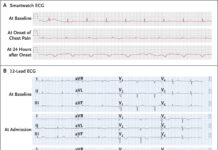Nightmare on Elm Street, a horrific medical mystery
In Hollywood, a film is either “based on a true story” or is a “work of fiction”. In the same way, horror films have managed to produce some of the most iconic figures of pop culture using fiction. While scary movies may sound too terrifying to be real, that is not always the case. And most films supposedly tell true stories to achieve a dramatic effect. For example, the film, “Nightmare on Elm Street” was inspired by a horrific medical mystery.
The story of a creature with razors for hands revolved around him hiding in kids’ nightmares and tearing them to shreds while they would be sleeping. According to the director of the film, Wes Craven, he came up with the idea after a series in the LA Times about healthy young male Southeast Asian refugees who arrived in the US with no apparent health problems. Then oddly, they would cry out in their sleep and die. The number of deaths in Southeast Asians because of this reason were increasing at an alarming rate. The incidents took place during the 1980s with at least 117 reported cases. This soon became one of the top 5 causes of death among Loatian Hmong population in the US. The medical authorities referred to this unexplained illness as the “Asian Death Syndrome” and later as the “Sudden Unexpected Nocturnal Death Syndrome [SUNDS]”.
The authorities were just as baffled as everybody else.
”I know what they didn’t die of,” Dr. Michael McGee, assistant medical examiner for Ramsey County, Minnesota, told the New York Times following four such deaths. ”They didn’t die of getting shot in the head, stabbed in the heart; they didn’t fall off the roof; they didn’t get poisoned; because we did an autopsy in each case, and we got a big zero.”
“We didn’t think anything mysterious was afoot until the third and fourth deaths happened very quickly,” he added, ”but then we began to wonder.”
Dr Friedrich Eckner of the University of Illinois College of Medicine conducted autopsies on 18 of the victims, the findings showed their hearts were enlarged. Whereas 17 of them had defects in their conduction systems. “Their hearts just shorted out,” Dr Fredrich Eckner told the Los Angeles Times.
In 1987, a more systematic study was done om the deaths in the US and refugee camps in Thailand. Deaths of this nature were found to be even more prevalent in Thailand than in the US. The study focused on deaths during sleep, and histories were taken from patients’ family, friends and fellow refugees within the camps. Previous instances of sleep disturbances were found in many of the cases. The study found, “Southeast Asian victims of sudden death in the US tend to be more recent immigrants, compared to controls, indicating that newly arrived refugees in the US may have a greater risk of sudden death than longer-term residents of the same group.” It was believed that the deaths were most likely because of a condition of the heart. Eventually the culprit of the deaths was found to be Brugada syndrome, which is caused by mutations in the SCN5A genes, disrupting the heart’s normal rhythm.
Source: Los Angeles Times




